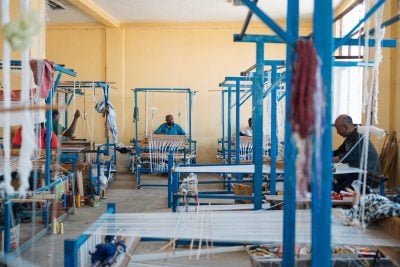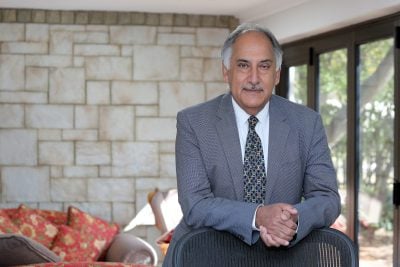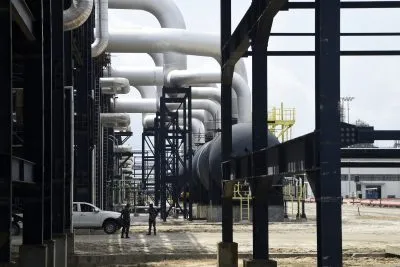Africa has plenty of experience in dealing with heat. But, as climate change worsens, extreme temperatures are posing increasingly severe threats to human health and food security across the continent.
Average global temperatures in July were the highest ever recorded. North Africa is one of many parts of the Northern Hemisphere to endure ferocious heat this summer – a new national record of 50.4 degrees Celsius was reported in Agadir, Morocco on 11 August.
Sweltering conditions will almost certainly become more common in the coming decades. A study published by University of Oxford academics in Nature last month warned that the 10 countries set to see the highest absolute rise in cooling requirements are all in Africa (based on the modelled increase in “cooling degree days”, a measure commonly used to quantify cooling demand).
Elizabeth Wangeci Chege, energy efficiency and cooling specialist at Sustainable Energy for All (SEforALL), a non-profit group with links to the UN, says that cooling has historically been a “blindspot” for policymakers in Africa.
However, there are signs of change. Recent heatwaves have made the need for cooling impossible to ignore, while the struggle to distribute Covid-19 vaccines in Africa drew attention to the lack of cold chain infrastructure. This is also a major problem for the agricultural sector – around half of food produced in Africa goes to waste because of a lack of cold storage facilities and other supply chain inefficiencies.
Cooling is set to be a major agenda item when world leaders gather for the COP28 climate summit in Dubai later this year. The “Cool Coalition” led by the UN Environment Programme (UNEP) is pushing for a series of actions to promote sustainable cooling solutions.
Energy efficiency
Ironically, cooling is itself a significant driver of climate change. UNEP says that conventional cooling solutions, such as air conditioning units, account for 7% of global greenhouse gas emissions. Wangeci Chege warns that Africa risks “creating the next big issue” if it simply follows the path of other regions in ramping up the use of traditional air conditioning.
But for the time being at least, air conditioning is out of reach for the vast majority of Africa’s population. A more immediate problem is that around 600m people live without an electricity connection, which in turn severely limits access to basic cooling infrastructure, such as refrigerators.
The refrigerators that are in use in Africa are often ancient and sometimes dangerous. Old fridges “dumped” in Africa can use around three times as much energy as modern alternatives. Improving access to energy-efficient equipment is a “low-hanging fruit solution”, Wangeci Chege says.
Aurélien Pillet, a senior climate finance specialist at the non-profit Basel Agency for Sustainable Energy (BASE), also emphasises that energy-efficient appliances come with long-term financial benefits.
“If you look at the lifecycle of the equipment, taking into consideration the upfront costs, but also the maintenance and the operational cost of the equipment, it’s a no-brainer – it’s much more profitable for someone to use an energy-efficient product than a sub-standard one,” he says.
BASE has helped run a programme in Ghana and Senegal designed to improve access to modern cooling devices. Pillet tells African Business that before the programme launched in 2020, the most energy-efficient appliances were unavailable in the region because the technology providers believed no market existed.
A key obstacle is that the upfront cost of modern energy-efficient products is inevitably greater. Pillet believes that one of the solutions can be found in the concept of “Cooling-as-a-Service” or “CaaS”.
CaaS “shifts the responsibilities between the different stakeholders to incentivise investment in cooling infrastructure,” he says. The provider of the appliance bears the upfront cost, then customers are charged based on usage.
BASE is working on a CaaS project to promote access to solar-powered cold storage rooms in rural areas of Nigeria. Farmers can use an app to access these facilities as a pay-per-use service. Pillet estimates that investors can recoup the $25,000 cost of these cold storage rooms within around two years, providing that the facility achieves a strong utilisation rate.
“Payback is very short, investment is not so big” says Pillet. “It’s becoming more profitable for private sector financiers and investors to support sustainable cooling infrastructure.”
Affordability
One of the companies to have spotted the opportunity to invest in cold chain services is Nigeria-focused start-up Koolboks. The company has developed a solar-powered refrigerator, which is mainly aimed at small food retail businesses, as well as clinics and pharmacies. These units make ice during the time when the solar panel generates electricity; this then serves as an “ice battery” that allows the device to continue refrigerating when the sun is not shining.
“We wanted to have a very simple solution,” says Déborah Gaël, the company’s co-founder and chief operating officer. “We are basically using two natural forces, water and sun.”
Gaël says Koolboks has sold around 5,000 units since 2020. It generates around 70% of its revenues in Nigeria, though it operates – mainly through distributors – in 23 countries globally.
“Affordability is key” to reaching SMEs in these countries, says Gaël. She explains that Koolboks uses a pay-as-you-go model that allows customers to pay for services in small instalments. Small businesses can then make significant savings from no longer needing to purchase fuel for diesel generators that they may have previously used to power refrigerators.
Passive solutions
Along with improved access to cold chain infrastructure, SEforALL’s Wangeci Chege argues that a range of relatively simple measures can make a big difference in helping to keep Africa cool.
“I’m feeling optimistic on the basis that one of the main solutions is passive solutions,” she says.
Wangeci Chege notes that the choice of building materials has a major effect on how buildings retain heat. Concrete, for instance, absorbs heat and then radiates it back, contributing to the “urban heat island effect”. This often causes cities to become several degrees hotter than surrounding rural areas.
By contrast, traditional African building designs – sometimes based on mimicking the appearance of local flora – are often better at reducing the impact of heatwaves. Maximising shade, building thick walls that keep heat out, and encouraging airflow are all helpful techniques. Even just painting roofs white can reduce the temperature inside buildings by at least 2 degrees, according to multiple studies.
Another simple yet vital “passive solution” comes from trees. Tree cover helps to combat the urban heat island effect, since trees provide shade and cool their surroundings by releasing water vapour. “We already have research and data to show if you plant trees in an urban area, you could reduce the temperature 5-10 degrees,” says Wangeci Chege.
The massive wave of urbanisation taking place in Africa therefore offers “a great opportunity” to ensure the cities of the future are designed to maximise passive cooling: “80% of the buildings that will exist by 2050 haven’t been built yet,” Wangeci Chege points out.
As anyone who has sweated through the recent unprecedented heatwaves will testify, neglecting cooling is no longer an option. From urban design to agricultural supply chains, the time has come to make cooling a top priority.
Want to continue reading? Subscribe today.
You've read all your free articles for this month! Subscribe now to enjoy full access to our content.
Digital Monthly
£8.00 / month
Receive full unlimited access to our articles, opinions, podcasts and more.
Digital Yearly
£70.00 / year
Our best value offer - save £26 and gain access to all of our digital content for an entire year!

 Sign in with Google
Sign in with Google 



